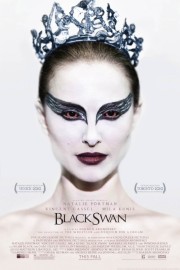Black Swan
Most great filmmakers find a thematic idea or genre that they explore their entire careers in varying ways. Hitchcock had suspense and fear. Scorsese has guilt and sin. Bergman had spiritual matters to attend to. Darren Aronofsky has made his cinematic obsession, um, obsession. From the mathmatic drive in “Pi” to the search for immortality in “The Fountain” to the artistic passion in “Black Swan” (his latest, and one of his greatest), the writer-director has found different stories and settings within which to explore his own concepts on the subject. The result is a sometimes-difficult but always riveting collection of five films that is among the most thrilling starts of a career in film history.
In “Black Swan,” we see ballerina Nina Sayers (Natalie Portman) practicing her craft just about every waking hour. Her mother (Barbara Hershey, cunning as a different kind of Mommy Dearest) was a ballerina before becoming pregnant with Nina, so the first thing we assume is that “her domineering mother controls her life.” But once we see her in practice with her New York dance company, we see that Nina might just be driving herself. Her chance might have finally arrived when the ballet’s art director, Thomas (Vincent Cassel, mesmerizing and daring), announces the “retirement” of former prima ballerina Beth (a scary and catty Winona Ryder), coinciding with his decision to start off the new season with a bold new imagining of “Swan Lake.” Her precision and innocence make her perfect for the White Swan, but does she have what it takes to also portray the dark and seductive Black Swan?
That description alone makes “Black Swan” a compelling human drama. But Aronofsky is such a bold visual artist that he is able to bring out the flamboyance and melodrama of the screenplay (by Mark Heyman, Andrew Heinz and John McLaughlin) deeper than most filmmakers, especially when it comes to the character of Lily (Mila Kunis), an up-and-comer who takes a particular interest in Nina. Rather than just being the obligatory “competition” for Nina, she’s also symbolic of that dark side Nina is to tap into for the Black Swan. Kunis is a revelation in the role, bringing sexuality and a primal force to the role that keeps Nina (and the audience) on her toes, leading up to an erotically charged love scene between Lily and Nina that the actresses play with energy and passion, which brings everything that came before it to a head and is the genesis for everything that comes after it. And that’s not even the best scene in the film.
The key inspiration for Aronofsky in making this film appears less “The Red Shoes” and more “Perfect Blue,” the Anime masterpiece by the late Satoshi Kon about a Japanese pop star who turns to acting, only to be driven mad by an obsessed fan’s chatter. Aronofsky bought the remake rights for the film while making his 2000 drug tour de force “Requiem for a Dream” (where he replicated an iconic shot of the heroine distressed and vulnerable in the bathtub), and while “Black Swan” is hardly a remake of that film, “Perfect Blue’s” paranoid and obsessive DNA is all over this film. I wouldn’t be surprised at all to learn that Aronofsky watched the Kon film often while filming. That same dark and unsettling feel is all over “Black Swan,” blending a level of reality with fantasy in a way that is hallucinatory to watch.
At the end of it all, there are three key collaborators that help Aronofsky achieve the film’s final effect. The first is his long-time cinematographer, Matthew Libatique, whose visceral, hand-held visual style keeps us especially uneasy about what’s real and what’s imagined in this film. Next up is Clint Mansell, who has always delivered striking music for Aronofsky and elevates his game tremendously here, weaving his own sense of existential musical dread with the tragic romance of Tchaikovsky’s masterwork to create an unforgettable assault on aural and emotional senses. And finally there’s Portman, who trained for 10 months so she could do as much of the ballet sequences as she could. We feel her pain physically every step of the way, as well as the emotional turmoil she endures even in her dreams. Even though she started out as a tough little assassin’s apprentice in “The Professional” in 1994, she’s been growing up gradually on-screen in roles as diverse as “Brothers,” “Beautiful Girls,” “V for Vendetta” and “Closer.” The experience has been thrilling for those of us who have enjoyed watching her over the years. As Nina, you can’t take your eyes off of her as she descends into perfection-driven madness.










